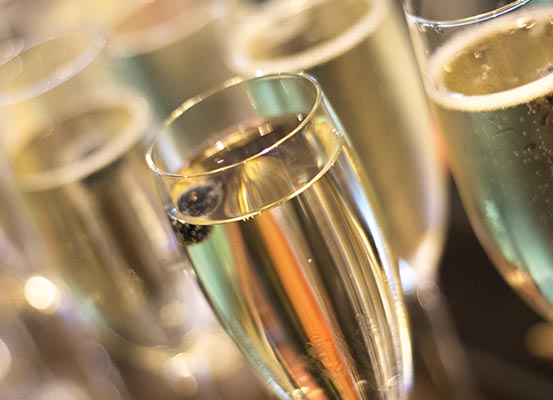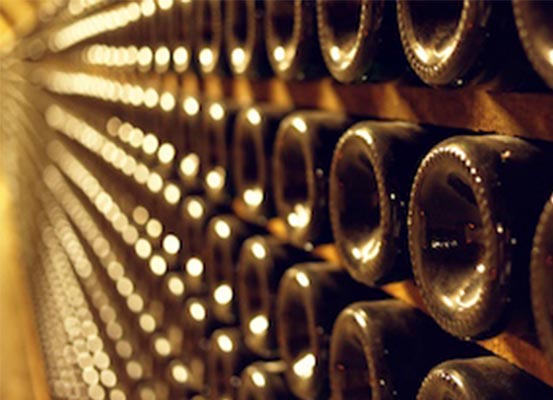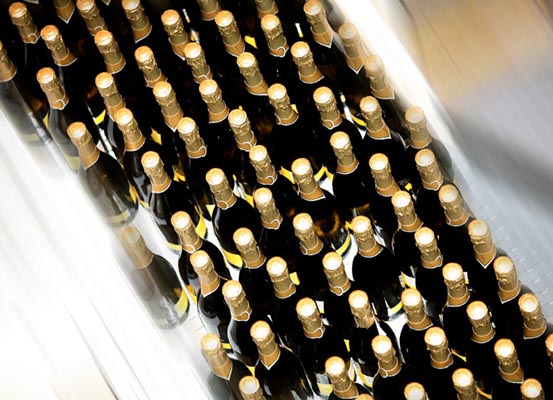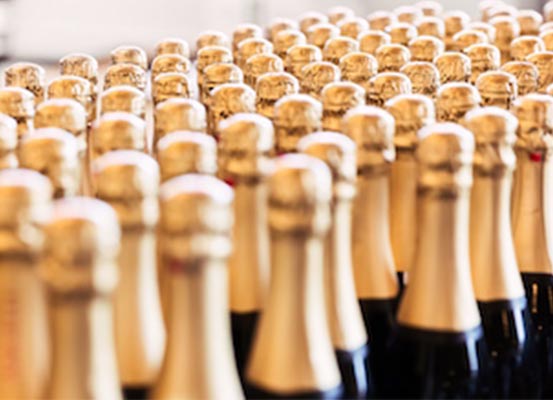酒類を扱うウェブサイトでは、アクセスに伴い皆様の年齢確認をさせていただきます。入力された生年月日を「保存する」をクリックすることにより、クッキーが生年月日を30日間保存します。30日を過ぎますと、アクセスの際に再度生年月日を入力していただきます. 公共のコンピューターを使用する場合、また未成年が使用しているコンピュータを共有する場合は「保存する」をクリックしないでください。TWEの個人情報取り扱いについてはこちらのプライバシーポリシーをご覧ください。
How do you make Sparkling Wine?
Our world-class winery is the home for our winemaking team, who blend old and new techniques to create extraordinary wines. Wolf Blass winemakers set the very highest of standards. From meticulous fruit selection, to fermentation in state-of-the-art, open vessels, small batch, experimental winemaking and maturation in fine oak barrels, our wines are crafted at every stage of production.

Making the Base Wine
Base wines for sparkling are made from grapes that are picked early, so are relatively low in sugar and high in acid. This helps achieve a fresh, low alcohol wine with a distinct, fine acid backbone. Base wines are fermented in the same manner as white wines.
Traditional sparkling wines are made from a combination of three grape varieties:
CHARDONNAY
High in natural acid and with a light perfumed bouquet and delicate mineral edge, Chardonnay offers freshness, finesse and elegance.
PINOT NOIR
Naturally high in acid, Pinot Noir offers complex flavours, body and fine tannins that contribute structure to the wine.
PINOT MEUNIER
Pinot Meunier produces delicate fruit styles with floral aromatics, adding a supple richness, while also lengthening the palate.
The final base wine may be a single variety or more commonly a blend of varieties from the same vintage (for a 'Vintage' sparkling) or from a number of different vintages (for a 'Non-Vintage' sparkling). This brings contrasting and complementary characters to the final wine, with the aim of creating a complex, balanced wine.

Bottling and Secondary Fermentation
The base wine is bottled, with yeast and sugar added to activate a secondary fermentation. The bottles are then capped with crown seals and stored horizontally. The yeast ferments the sugar, producing carbon dioxide and a small amount of additional alcohol. Once all the sugar has been consumed, the yeast undergoes 'autolysis', which adds complexity, aroma and flavour, texture and 'mouth-feel, while finessing the quality of the bead.

Maturation and Riddling
The wine is matured on the spent yeast 'lees' for between six months and many years, depending on the quality and the style of wine. During maturation, the bottles are continually turned (riddled) and slowly moved to an inverted position, allowing the lees to settle in the neck of the bottle.

Disgorgement and Dosage
After maturation, the neck of the bottle is frozen and the crown seal is removed. This allows the frozen plug of lees to be released (disgorgement). Dosage allows for final style modification through the addition of liqueur, sweetener or brandy spirit, which fine-tunes and perfects the wine. The bottles are then sealed with a cork and wire muzzle, ready for enjoyment.